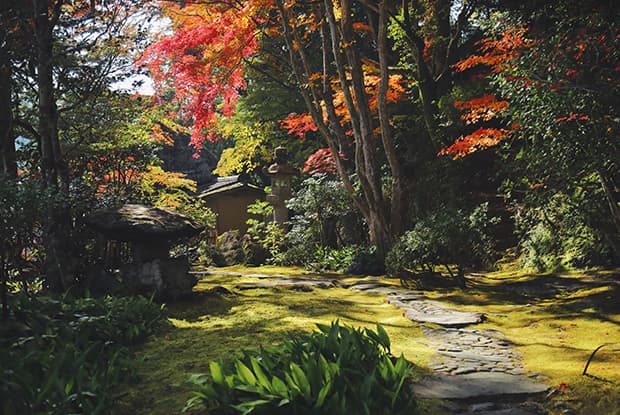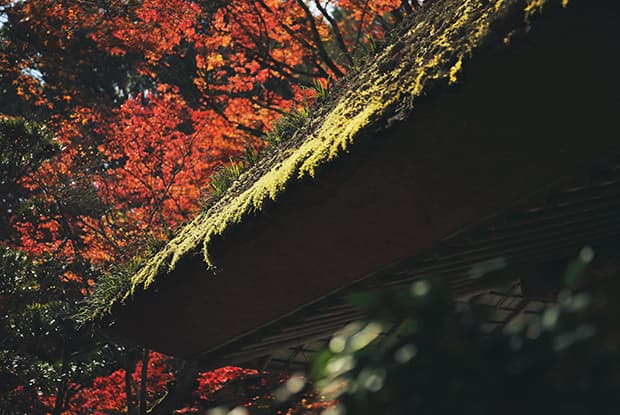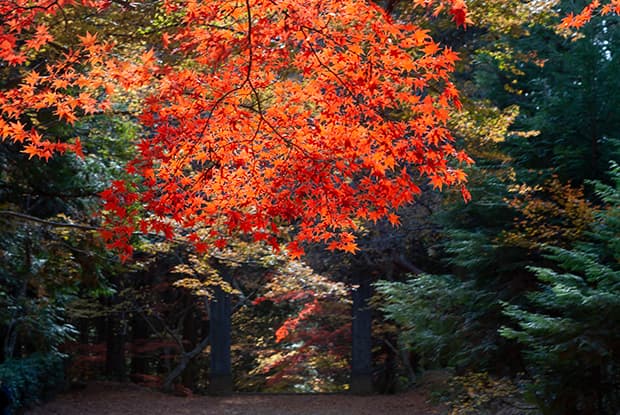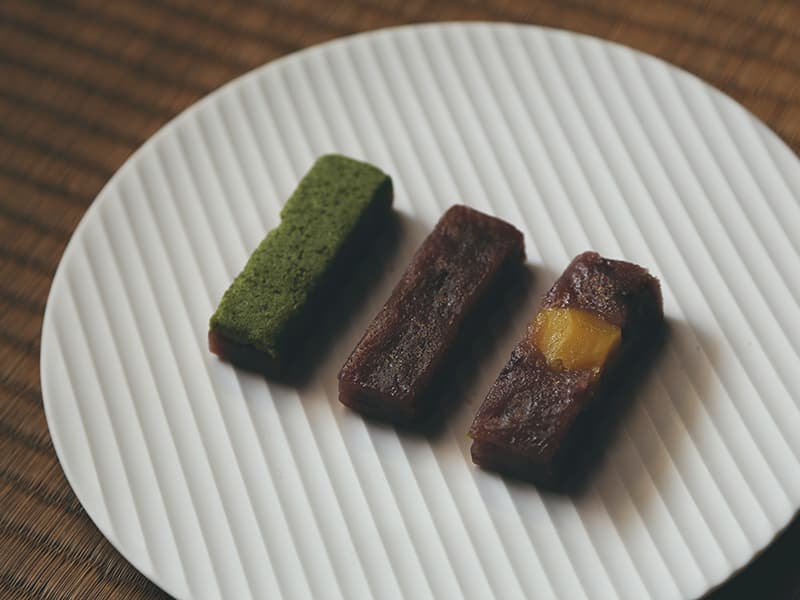水郷の恵みとこだまする、大洲の秋の彩り。
川のほとりに文化は生まれるというが、肱川も然り。
豊かな流れが潤した土地に、城が建ち、城下町が栄え、殿様文化は市井へ受け入れられた。
例えば、歴代の大洲藩主も遊賞の地として好んだという、臥龍の淵。
赤く燃ゆる紅葉のその色を、澄んだ水面に映す。
豊かな流れが潤した土地に、城が建ち、城下町が栄え、殿様文化は市井へ受け入れられた。
例えば、歴代の大洲藩主も遊賞の地として好んだという、臥龍の淵。
赤く燃ゆる紅葉のその色を、澄んだ水面に映す。

大洲盆地は秋に差し掛かると、早朝に朝靄や雲海が現れる。秋の大洲は、五感で私たちを愉しませてくれる。郷土料理いもたき、名物とんくりまぶし。臥龍山荘や如法寺が紅葉に色づき、城下の町並みは心地よい秋の旅に最適だ。
静かなる靄の訪れと味覚が伝える
大洲の秋時間。
大洲の秋時間。
静かな臥龍淵湖畔に、秋色に色づいた臥龍山荘の「不老庵」が映る。賑やかだった夏が過ぎ、町も人も自然も、どこかゆったりとした呼吸をしているように感じる。思い思いの装いで、秋の味覚を愉しみながら優雅に町を散策したい。



清涼な城下町を
人力車で優雅に散策。
人力車で優雅に散策。
秋、過ごしやすくなってきた頃、思い思いの浴衣に身を包み人力車に身を委ねる。和やかな時間の流れと案内人の言葉に耳を傾けながら、上質な時を愉しみたい。
- おはなはん通り
- 江戸時代の町割と家並等が忠実に残された地域で、当時の暮らしぶりを垣間見ることができる。北側の蔵並びは商屋のもので、南側は武家屋敷であった。この通りは、藩主の別邸へのお成道として使用されていたため、他の通りよりも広くなっていると言われており、商屋の火事が武家屋敷に飛び火しないように配慮していたとも考えられている。
- 城下町の肱南地区
- 肱南地区は、肱川が大きく湾曲した中流域あたりに広がる旧城下町を指す。戦災を免れたことから、加藤氏六万石の時代より築き上げてきた大洲城や臥龍山荘のほか、城下町特有の町割と武家屋敷、町屋などの文化的遺構が多く残る。現在は、行政機関などが集まる大洲の中核地区でありながら、旧来の趣ある街並みを残す地区として多くの人が訪れている。
人々を魅了する
臥龍山荘と如法寺の紅葉
臥龍山荘と如法寺の紅葉
大洲の名所臥龍山荘は、ことさら秋の装いで人々を魅了する。橙、黄、赤に色づいた臥龍山荘の庭園から望む不老庵は、忘れることのできない秋のひとときを心に刻む。また、肱川湖畔に反射する紅葉に映える対岸からの不老庵もひとしお。是非一度目に収めたい。

臥龍山荘
青く澄みわたる臥龍淵の水面には、新緑や紅葉が鏡のように映る。その美しさに惚れ込んだ地元の名士・河内寅次郎は京都の名工を招聘し、氏の別荘としてこれを建築した。国の重要文化財に指定され、数寄屋造りなどの建築美や美しい日本庭園を味わうことができる。2011年に、ミシュラン・グリーンガイド・ジャポンの一つ星を獲得。また、夢の美術館 世界の名建築100選にも選ばれている。



如法寺
大洲藩2代藩主・加藤泰興が盤珪永琢を開山として建立した臨済宗妙心寺派に属する寺院。如法寺仏殿は、禅堂の機能が兼ねられている珍しい造りで、建物の中央に御本尊の釈迦如来像を安置して仏殿の空間としているが、その両脇には僧侶が修行するための畳間が備えられている。また、仏殿は文化遺産として国の重要文化財に指定されている。


大洲の秋の美食、
いもたき、とんくりまぶし、川魚たち。
いもたき、とんくりまぶし、川魚たち。
大洲に古くから伝わる風習いもたきは、肱川湖畔で嗜まれる憩い。人々の豊作を祈り、大洲で育った里芋を大鍋でいただく。その他にも四国一の生産量を誇る栗を使った名物とんくりまぶし、清流肱川の恵みに育まれた鮎、アマゴ、いわななどの川魚も目白押しだ。








